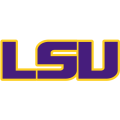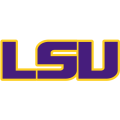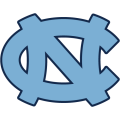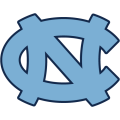Historic QB trend is about to shape the NFL Draft — and careers of Caleb Williams, Drake Maye and Jayden Daniels
It used to happen just once every couple decades.
A quarterback drafted first overall, then second and also third.
Jim Plunkett, Archie Manning and Dan Pastorini in 1971.
Tim Couch, Donovan McNabb and Akili Smith in 1999.
Trevor Lawrence, Zach Wilson and Trey Lance in 2021.
Don’t expect now to wait until the 2040s.
Instead, all arrows (and mock drafts) point to the rare NFL phenomenon bucking its generational occurrence to return this week after three years. Because for the first time since at least 1970, each of the draft’s top three teams traded away their starting quarterback after season’s end.
The league has never even seen the top two teams trade away their quarterbacks in the pre-draft period, NFL data scientist Tom Bliss confirmed to Yahoo Sports.
It’s no secret what league decision-makers expect next from the Chicago Bears, Washington Commanders and New England Patriots.
“Those teams all traded quarterbacks,” New York Giants general manager Joe Schoen said last month at the league’s annual meeting, “and there’s a narrative out there that they may take a quarterback.”
The movement of Justin Fields, Sam Howell and Mac Jones — before any of their rookie contracts expired — signals how impatient teams have become as they shuffle through quarterbacks, head coaches and general managers at an alarming rate.
The expedited return-to-relevance process isn’t just influencing when quarterbacks are drafted. It’s also influencing how they’re drafted and why they’re drafted. The pressure to pick the right guy is on, regardless of whether the franchise ecosystem is primed for success.
“There’s such a thirst to see these young guys play that most teams are putting these guys out there way before they’re ready,” one NFC executive told Yahoo Sports. “The economic structure is really pushing that.”
So as fans search for answers on where Jayden Daniels, Drake Maye, J.J. McCarthy and more will land (don’t spend your time on Caleb Williams speculation), teams are searching for answers on how to help their quarterbacks succeed faster than ever before.
What’s the key to that jump-start?
Yahoo Sports spent the past two months interviewing head coaches, general managers, scouts and executives to find out what they believe most influences a quarterback’s success rate — and how the relative importance of those traits, if not the traits themselves, have changed in the past two decades.
Here’s what we learned.
Why exactly is quarterback evaluation such an inexact science?
Los Angeles Rams general manager Les Snead prefers the video game metaphor.
All NFL prospects have played the “video game” of football in college; at the NFL level, they’ll play a game with the same basic tenets but a new level of difficulty. Talent evaluators thus need to determine how well a player’s traits, production and persona translate to the next level. The gap between quarterback levels is wider than at any other position.
“All of a sudden you gotta get used to, let’s call it, tighter windows and more bodies,” Snead told Yahoo Sports at the league’s annual meeting. “It’s just more noise around the target, but it does take some courage [when] the quarterback is having to rely on everyone making some sort of jump, or doing their job, to be able to do his job.
“Everybody [else] who's adjusting is a little more in a silo.”
It’s that lack of silo — good luck rookie QBs, your success is not fully in your control! — that led one AFC scout to describe quarterback not only with the classic “most important position in sports” label but also with a new superlative: the most dependent position in all of sports. Teams aren’t just evaluating how strong Williams throws or how fast Daniels scrambles. They’re evaluating how each player’s traits will integrate with a last-second play call, five big-bodied protectors and a series of targets who may need the quarterback buying a few more seconds against a pass rush to best position his teammate to get sufficient separation.
We’re looking for guys that have legitimate athletic ability that threatens defenses and then just this whole idea of, ‘Can he create?’ That’s never been on my top five traits that I look for. Now, it’s probably one of my top ones.AFC scout
There’s not one collection of traits that guarantees success in this famously inexact science. Instead, teams aim to determine which player's bucket of offerings best merges with their franchise.
“What are the player’s superpowers?” Snead said. “Are we gonna be able to scheme those and utilize those through our scheme? If the answer is ‘no,’ or we’d rather have other superpowers, then you move on to the next one.”
Which superpowers do teams prioritize highest right now?
At the scouting combine, the league’s annual meeting and via phone interviews, Yahoo Sports gathered data from seven head coaches, six general managers, three scouts and two executives to make those determinations. The 18 talent evaluators represented 13 teams, including eight NFC teams and five AFC teams. Some sources spoke on the record; others, on condition of anonymity.
And while their answers varied from one another, several also acknowledged how much their own answers had changed since they entered the league.
“It’s not specific or cookie cutter for us,” Commanders head coach Dan Quinn said. “I think that’s probably changed the last 20 years, hasn’t it?
“It’s always evolving. … In 25 years, we’ll say, ‘Man, that’s different, too.’”
As NFL evaluators scout QBs, they trust the processing
Twenty years ago, NFL teams sought a Peyton Manning-like prototypical quarterback. Evaluations pointed toward tall, strong, big-armed quarterbacks who could win from the pocket and hit high-speed, dynamic targets with pinpoint accuracy.
A quarterback still needs to meet thresholds of physical and athletic ability should he want to play rather than coach, but he can now arrive at that threshold in different ways.
In conversations with 18 talent evaluators about what they value most in a quarterback, only seven had physical talent or arm strength top of mind and nine mentioned accuracy. In comparison, 16 of the 18 cited processing speed and capacity as integral.
“If you ask 100 scouts, I bet 99 if not all 100 would say processing, decision-making and all that would be in the top two or three traits that they’re looking for,” one AFC scout said.
Teams believe sharp decision-making (eight of 18), leadership (nine) and the mental makeup necessary for a quarterback to thrive under pressure and constant hits (11) all complement quarterback processing.
An NFC scout said their coaching staff increasingly cares about a quarterback's ability to diagnose which defensive look or stressor he was least prepared for so that coach and quarterback can problem-solve on the sideline. An executive from another NFC team said that the ability to “read the defense pre-snap and make a quick decision post-snap is crucial to offensive football these days, more so than it’s ever been.”
“The quarterback has more decision-making responsibility than anybody,” Dallas Cowboys head coach Mike McCarthy said. “And it’s clearly the most important component that lines up with his success.”
The right decision is context-dependent, factoring in not only the play but also the player executing it.
While Tua Tagovailoa’s quick release might best leverage the Dolphins’ speed-heavy scheme, Lamar Jackson and Josh Allen’s best chance at a first down is often via designed run.
What are the player’s superpowers? Are we gonna be able to scheme those and utilize those through our scheme? If the answer is ‘no,’ or we’d rather have other superpowers, then you move on to the next one.Rams GM Les Snead
In an ideal world, which the Kansas City Chiefs are living in, a quarterback has the rare combination of in-pocket and out-of-pocket success. Patrick Mahomes’ hyperfast instincts and processing pair with the dexterity to unspool from any angle (and either hand) to create rare success on schedule and off schedule.
“We’re looking for guys that have legitimate athletic ability that threatens defenses and then just this whole idea of, ‘Can he create?’” one AFC scout said. “That’s never been on my top five traits that I look for. Now, it’s probably one of my top ones.”
Coaches are increasingly leveraging athletic potential at quarterback to their advantage. Effective scrambling and creative play extension aren’t breaking news in football. But as they influence the way this year’s quarterback class is ranked — and particularly the top three picks — it’s worth distinguishing between quarterbacks who run for 60 yards per game, as Jackson has done through his Ravens career, and quarterbacks who will carry less often but regularly extend plays with their legs and instincts.
“We’ve expanded our view of what a quarterback is,” said Ravens head coach John Harbaugh, who has overseen Jackson’s two MVP seasons in six years. “If you go back and look at football in [20]15, ’16, ’17 or before that, there’s pretty much a model for that position. That model has definitely, wouldn’t you say, expanded tremendously.”
To ensure quarterbacks can create, coaches must challenge themselves to do the same. Gone are the days of coaching a quarterback to fit into a predetermined structure.
“What’s changed the most is there’s an open mind to all the different ways a quarterback can play football,” Tennessee Titans head coach Brian Callahan said. “This age of coaching is all about making quarterbacks comfortable, taking their feedback and putting them in position to have success.”
What evolving landscape means for Williams, Daniels, Maye
Will Williams, Daniels, Maye and their counterparts find ecosystems for success? If they leave the board in the first three spots, they will need to compensate for team deficiencies more than their classmates drafted later.
In the model that each of their teams want, they’ll need to process.
The Bears seek a quarterback who can lead resiliently in the face of criticism and losses, wielding accuracy, timing and a solid platform to win games. Williams will find better weapons and more dependable protection than what greeted Fields in 2021. Head coach Matt Eberflus hopes the 2022 Heisman Trophy winner can then elevate the cast around him with the situational football that powered 72 touchdowns to 10 interceptions in two seasons at USC.
“I look at the guys that can operate third down, two-minute and the end-of-the-game situations,” Eberflus said. “To me that’s a separator. And then you look at toughness.”
| Player | Yds | TD | Pct | QBRat | Yds |
|---|---|---|---|---|---|
| 3,633 | 30 | 68.6 | 170.1 | 121 | |
| 3,812 | 40 | 72.2 | 208 | 1,134 | |
| 3,608 | 24 | 63.3 | 149 | 449 |
Quinn and the Commanders are widely expected to take LSU’s Jayden Daniels second overall, though potential buzz around Maye and McCarthy won’t die down until the name on their card is announced. They’ll need to decide: Do we want a primary pocket passer or the best athlete of the class? Do we want to lean into offensive coordinator Kliff Kingsbury’s experience with Kyler Murray and the RPO, or stake our chances on a sturdier and more durable player in an outdoor stadium? Quinn emphasized the importance of studying not only film of a quarterback’s throws, but also film of how they handle throwaway opportunities and unbeatable blitzes.
“Because there’s so much information that comes to that position,” Quinn said. “Quite honestly, most of my time as a defensive coach was trying to change the look for the person so they had to process after they had the ball in their hands.”
And the Patriots? First-year head coach Jerod Mayo, a defensive mind like Quinn and Eberflus, said he seeks a good decision-maker who exudes the competitiveness and toughness to “get smacked and get right back up.” He discussed how much higher Maye’s ceiling is than the little he displayed in two starting seasons at North Carolina, Mayo adding that “it’s about five guys, honestly, that could come in and be a solid quarterback in the future.”
“If we take a quarterback at 3, that means we are really convicted that this player is the future of the organization,” Mayo said.
Patriots director of college scouting Eliot Wolf cast mystery on that likelihood Thursday when he said: “We’re open for business in the first round and every round.”
His tune was different than that of the Bears, who have basically shown their hand about Williams, and the Commanders, whose GM Adam Peters said Thursday that “we feel great about staying at No. 2.”
“I don’t see a lot of scenarios where we’d trade down, to be honest with you,” Peters added.
And yet, history says the chance of failure is still high in this increasingly desperate race.
“I don’t think anybody has the magic pill to understand that one,” Peters said at the combine. “If they do, let me know. I’ll hire ’em.
“Most of them are mistakes.”







